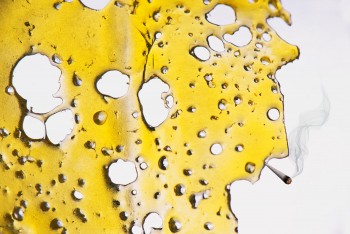The process of purchasing cannabis has undergone a significant transformation in recent times. With the legalization of cannabis across various parts of the world in the past decade, smokers have noticed a noticeable shift in choosing their preferred strains.
The trend-driven hype surrounding cannabis strains is continuous, causing the lifespan of each strain to grow shorter and shorter. As a result, many modern-day consumers are more inclined to make purchases based on their preference for particular growers and brands rather than specific cultivars.
In the past, the outcomes of Cannabis Cups were used to determine the dominant cannabis strains for several years. But in today's market, it can be challenging to find specific cannabis crosses consistently. This raises a seemingly straightforward question: What is the typical lifespan of a cannabis strain or a THCV strain?
A Different Perspective on the Lifespan of Cannabis Strain
Elise McDonough, a cannabis specialist and writer, reminisced about the developments in cannabis genetics during an interview. She recounted a significant event at the 2004 Cannabis Cup, where a Canadian named Reeferman caused an upset in the Dutch scene by winning the top spot in the sativa category for Love Potion #1.
According to Elise McDonough, Reeferman arrived on the Dutch scene and outshined all the local strains with his unique and refreshing offering. She believes that the Dutch cannabis industry's activities in the '90s and early 2000s are comparable to what Californians are currently doing. During that period, the Dutch had certain strains, and breeders crossed everything with each other. Eventually, this resulted in a model where all the strains became quite similar.
Elise McDonough clarified that Reeferman developed strains like Love Potion by traveling to different parts of the world, discovering landrace strains, cultivating them in vast fields, selecting the best ones, and then breeding them. Because of this, Reeferman produced exceptionally unique cannabis strains compared to what was available from the Netherlands during that period.
McDonough expressed her opinion, stating that a similar transformation is bound to occur in California, where people are weary of the many variations of Cookies strains. She believes everyone has grown and crossed the same strains without any logical methodology, resulting in an indistinguishable mishmash of strains.
Currently serving as the marketing director at Binske, McDonough views the lifespan of strains from a new angle.
McDonough stated that the trend of quickly creating new strains and the resulting hype put pressure on brands like Binske to offer something new and unique to retailers constantly. The retailers, in turn, continuously seek fresh and distinctive strains to add to their menus.
McDonough highlighted that retailers have different goals from conventional cannabis breeders, who spend several years stabilizing and preserving genetics. She drew a parallel between cannabis and dog breeding, citing Labradoodles as an example that required generations of breeding between Labradors and poodles.
McDonough noted that in cannabis, like dogs, it takes several generations to produce stable, uniform, and predictable characteristics. She stated that these traits are their intellectual property and unique selling point for breeders, which takes years of stabilization work to achieve. However, many of the latest hyped strains are unstable and short-lived.
Marketing and Popularity Arc as a Contributing Factor
While unstable genetics may contribute to the short lifespan of newer cannabis cultivars, Fig Farms' chief sales officer, Mike Doten, believes many other factors also come into play. According to him, unique strains follow a popularity arc that lasts around five years and involves a rise and fall in demand.
Doten mentioned that they have attempted to retire strains like Dark Karma, but the high demand for the product has made it difficult. Distributors have emphasized the need to keep it growing to avoid losing shelf space, which pressures them to maintain its availability.
Doten noted that more common strains have a shorter lifespan as consumer demand decreases. For instance, if they were to introduce a commonly available strain like Gelato #41, they would only have a six- to eight-month period to sell it at their usual rate before they have to start reducing the amount and gradually phasing it out.
According to Doten, marketing plays a crucial role in extending the lifespan of a strain. He explained that sometimes they introduce several new strains in a month without proper marketing, which can shorten their lifespan. He added that having a well-designed marketing package could help extend the life of a strain. A strain's flavor profile fitting into overarching popular categories such as"fruit" and "gas" is another element that helps keep them in the spotlight.
Josh Vert, the co-founder of the award-winning extracts producer Royal Key, stated that one of the primary considerations in selecting a cultivar for the market is its potential to be turned into a cannabis concentrate. The way a specific strain grows is another factor that comes into play.
Vert pointed out that determining the longevity of a strain is a complex matter, as it involves various factors such as marketing, strain stability, market perception, and overall desirability. He cited Zkittlez as an example of a strain that excels in stability and market appeal.
According to the chief of staff at Kayla Extracts, Alyssa Roberts, inquiring about the lifespan of a typical strain is a multifaceted question. She supported McDonough's views, stating that pursuing new flavors often leads cannabis breeders to ignore genetic stability. Roberts added that the lifespan of a strain is usually around four to five years when it gains popularity and hype before it starts getting crossed. She also noted that strain variability and differentiation depend on the market demand and consumers' wants.
Conclusion
The lifespan of cannabis strains is a complicated topic influenced by genetics, marketing, and consumer demand. While some strains might succeed over the long haul, others would be fleeting and rapidly replaced by new types. Breeders and cultivators must strike a balance between the demand for novel and distinctive strains and the need for genetic consistency and stability as the cannabis industry continues to develop. The cannabis sector can continue to offer high-quality cannabis products that satisfy consumers' shifting demands and tastes with care and consideration.







